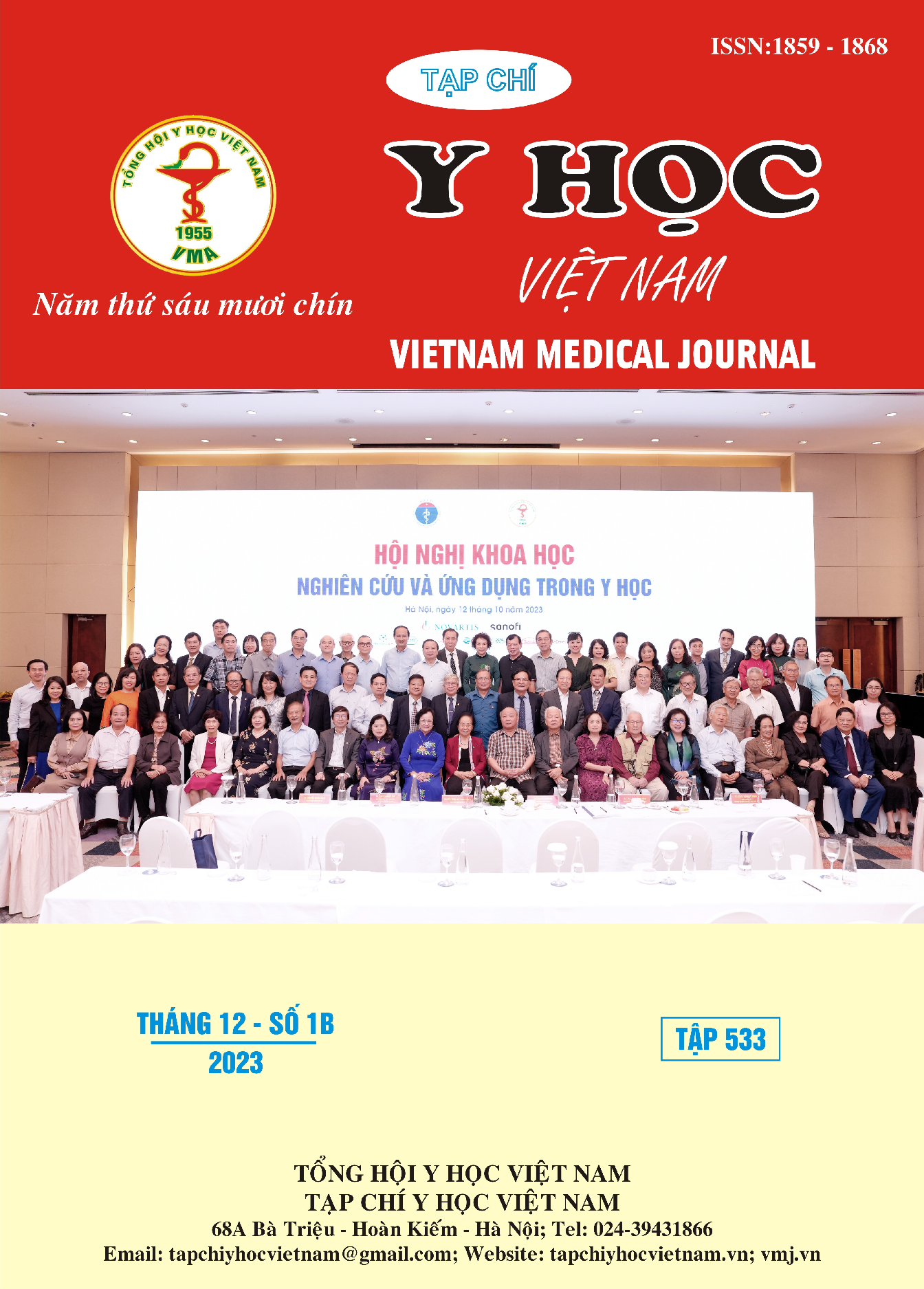PRIMARY ANTIBIOTICS RESISTANCE OF HELICOBACTER PYLORI ISOLATED FROM PEPTIC ULCER CHILDREN AT NATIONAL CHILDREN’S HOSPITAL, HANOI, VIETNAM IN 2023
Main Article Content
Abstract
A cross-sectional study was conducted among 59 children with peptic ulcer aged from 6 to 17 years old at the Gastrointestinal Clinic, National Children’s Hospital from August 2022 to July 2023. We conducted this study to determine the severity of resistance to H. pylori primary antibiotic resistance in children with peptic ulcer. We assessed H. pylori antibiotic resistance with clarithromycin, levofloxacin, amoxicillin, tetracycline and metronidazole by Etest. We observed 59 strains (100%) of H. pylori resistant to antibiotics, 1 strain resistant to monoresistant antibiotic; 58 strains resistant to multi drug resistant (MDR). we observed that resistance to clarithromycin was the most predominant with the highest proportion of 100%. Resistance to amoxicillin, levofloxacin and metronidazole, were 98.3%, 10.2% and 3.4 %, respectively. No strains of H. pylori resistant to tetracycline. Co-resistance to 2 antibiotics was observed among 98.3% for clarithromycin and amoxicillin, and 3.4% for amoxicillin and metronidazole. Triple resistance to amoxicillin, clarithromycin, and Levofloxacin was 10.2%. Since primary antibiotic resistance of H. pylori among children with peptic ulcer is common, it is necessary to the use antimicrobial susceptibility test before prescribing antibiotics in order to improve the effectiveness of H. pylori eradication.
Article Details
References
2. Jones NL, Koletzko S, Goodman K.J. et al. Joint SPGHAN/NASPGHAN Guidelines for the Management of Helicobacter pylori in Children and Adolescents (Update 2016). Journal of Pediatric Gastroenterology and Nutrition 2017; 64 (6): 991-1003.
3. Nguyễn Thị Út, Hoàng Thị Bích ngọc, và CS. Kháng kháng sinh tiên phát của helicobacter pylori ở trẻ em loét dạ dày tá tràng tại bệnh viện nhi trung ương năm 2017. Tạp chí Y học dự phòng, 2019; 29(12):11-19.
4. Alarcon T, Urruzuno P, Martinez M. J, et al. Antimicrobial susceptibility of 6 antimicrobial agents in Helicobacter pylori clinical isolates by using EUCAST breakpoints compared with previously used breakpoints. Enferm Infecc Microbiol Clin. 2017;35 (5):278-282.
5. Van Thieu et al., Antimicrobial Resistance and the Successful Eradication of Helicobacter pylori-Induced Gastroduodenal Ulcers in Vietnamese Children. Med. Arch. 2021;75, 112-115.
6. Liu G, Xu X, He L, et al. Primary antibiotic resistance of Helicobacter pylori isolated from Beijing children. Helicobacter. 2011;16 (5):356-362.
7. Nguyễn Thị Việt Hà và Nguyễn Gia Khánh. Nghiên cứu tình trạng kháng kháng sinh ở trẻ em bị viêm dạ dày tá tràng có nhiễm Helicobacter pylori tại bệnh viện Nhi trung ương, Tạp chí Nhi khoa. 2010; 3(3&4): 211-217.
8. Lê Thanh Hải, Nguyễn Thị Út. Kháng kháng sinh tiên phát của Helicobacter pylori trên trẻ em nhiễm Helicobacter pylori. Tạp chí Y học Dự phòng. 2017;27(2PB): 9-17.
9. Lê Minh Hồng, Trần Thị Mộng Hiệp, Nguyễn Tuấn Khiêm và cộng sự. Đề kháng kháng sinh nguyên phát ở trẻ em viêm loét dạ dày – tá tràng do Helicobacter pylori. Tạp chí Nhi khoa 2016; 9(4):79-84.
10. Loan T. et al, Antibiotic resistance of helicobacter pylori in children with gastritis and peptic ulcers in Mekong Delta, Vietnam. Healthcare. 2022;1021.


